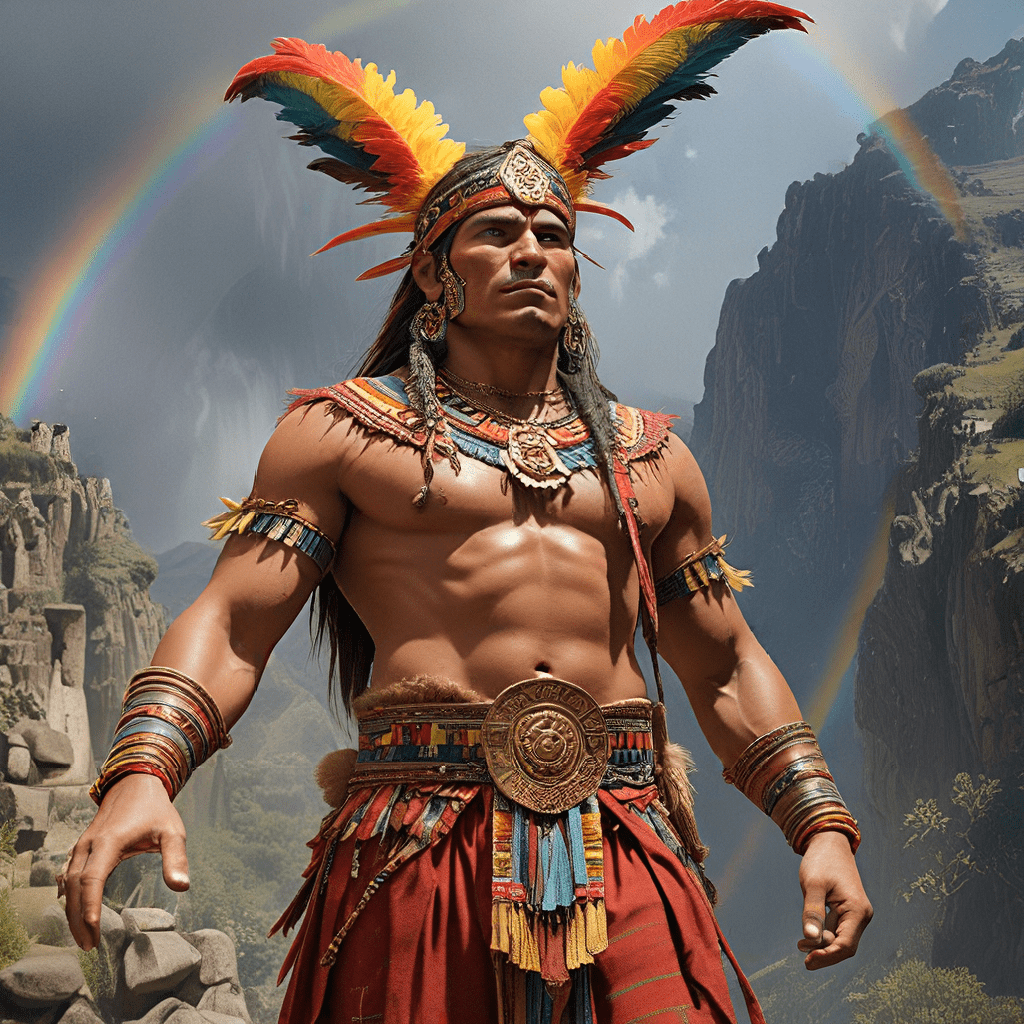Top 5 Trickster Myths That Will Change Your Perspective
1. Introduction to Trickster Myths
Trickster myths are fascinating narratives that feature cunning characters who defy conventional behavior. These myths serve as powerful cultural artifacts, reflecting the values, beliefs, and social norms of the communities from which they originate. The trickster archetype manifests across various cultures, often embodying qualities such as wisdom, mischief, and creativity.
Exploring these myths is not merely an academic exercise; it offers profound insights for personal and societal growth. By engaging with the complexities of trickster figures, we can learn about resilience, adaptability, and the importance of questioning established norms.
2. Understanding the Role of the Trickster
Tricksters are characterized by their cunning, playful nature, and ability to subvert expectations. They often embody dualities, acting as both creators and destroyers within their narratives. This complexity allows them to challenge societal norms and conventions, prompting individuals and communities to rethink their values and beliefs.
- Cunning: Tricksters often outsmart their opponents through cleverness and wit.
- Playful: They engage in playful antics that entertain while imparting wisdom.
- Subversive: Tricksters can undermine authority, pushing boundaries and encouraging critical thinking.
By embodying these traits, tricksters play a crucial role in societal introspection and transformation.
3. Myth 1: Anansi the Spider (West African Folklore)
Anansi, the spider, is a beloved figure in West African folklore, renowned for his intelligence and resourcefulness. His stories often revolve around his encounters with other animals and his ability to outsmart them, illustrating important life lessons.
Some key lessons from Anansi’s tales include:
- Intelligence: Anansi demonstrates that cleverness can triumph over brute strength.
- Adaptability: He navigates challenges by using his wit and ingenuity.
- Resilience: Anansi’s adventures remind us of the importance of perseverance in the face of adversity.
Modern problem-solving can draw inspiration from Anansi’s traits, emphasizing the value of critical thinking and creativity in overcoming obstacles.
4. Myth 2: Loki (Norse Mythology)
Loki is a complex character in Norse mythology, often portrayed as a trickster who oscillates between aiding the gods and causing chaos. His duality is a central theme in many myths, where he acts as both a helper and a hindrance.
Loki’s stories provide insights into:
- Chaos and Creativity: His actions often lead to unexpected consequences, highlighting the fine line between creativity and destruction.
- Balance: Loki’s presence serves as a reminder of the necessity of balance in life, where chaos can lead to new opportunities.
Understanding Loki encourages us to embrace the complexities of life and recognize the potential for growth within chaos.
5. Myth 3: Coyote (Native American Folklore)
Coyote is a prominent trickster figure in many Native American cultures, often depicted as a cultural hero who embodies both wisdom and foolishness. His stories are rich with humor and serve to teach valuable lessons.
Coyote’s antics impart important lessons about:
- Humility: His failures often remind us of our limitations and the importance of humility.
- Adaptability: Coyote’s ability to navigate various challenges teaches us the need for flexibility in our approaches.
Through Coyote, we learn that humor and wisdom can coexist, providing a unique perspective on life’s challenges.
6. Myth 4: Hermes (Greek Mythology)
Hermes, the messenger of the gods in Greek mythology, is also recognized as a trickster figure. His role encompasses themes of communication, commerce, and cunning.
Key lessons from Hermes include:
- Resourcefulness: Hermes exemplifies the importance of cleverness in navigating complex situations.
- Communication: His role as a messenger highlights the significance of effective communication in achieving understanding and cooperation.
Hermes’ characteristics encourage us to be adaptable and resourceful, especially in challenging circumstances.
7. Myth 5: Reynard the Fox (European Folklore)
Reynard the Fox is a legendary figure in European folklore, particularly in medieval literature. His tales often revolve around themes of cunning and survival, where he uses his intellect to outwit those who would do him harm.
The themes present in Reynard’s adventures include:
- Cunning: His cleverness allows him to navigate tricky situations and emerge victorious.
- Survival: Reynard’s stories emphasize the importance of wit and strategy in overcoming challenges.
Reynard’s cunning and moral ambiguity raise pertinent questions about ethics and morality in contemporary society.
8. The Impact of Trickster Myths on Modern Society
Trickster myths continue to influence modern storytelling and popular culture, shaping narratives in literature, film, and art. These figures challenge authority and provoke thought, encouraging audiences to reflect on their own beliefs and societal norms.
Examples of trickster themes in modern media include:
- Literature: Characters like the Joker in Batman embody trickster qualities.
- Film: Movies such as “The Mask” showcase the playful yet subversive nature of tricksters.
- Art: Artists often use trickster motifs to challenge societal expectations and provoke dialogue.
Through these examples, we see how tricksters remain relevant, serving as catalysts for change and reflection.
9. Lessons Learned from Trickster Myths
In conclusion, trickster myths offer invaluable lessons that resonate with contemporary audiences. They teach us about the importance of intelligence, adaptability, and questioning established norms. By embracing the qualities of tricksters, we can foster personal growth and challenge societal expectations.
As we navigate the complexities of modern life, let us draw inspiration from these timeless figures, reminding ourselves that sometimes, a little mischief and creativity can lead to profound insights and transformation.



